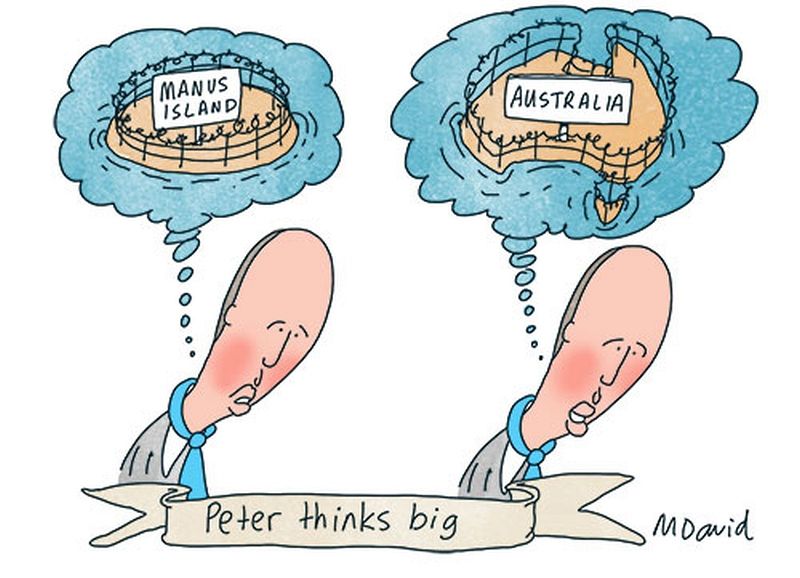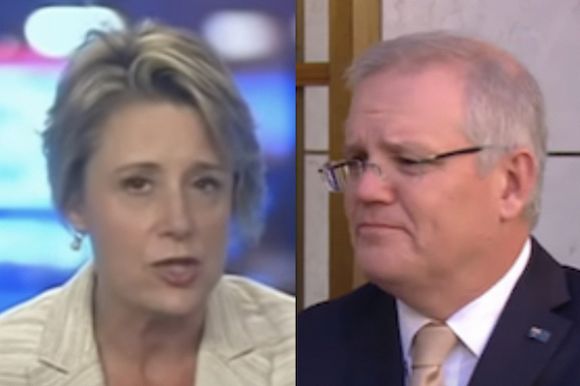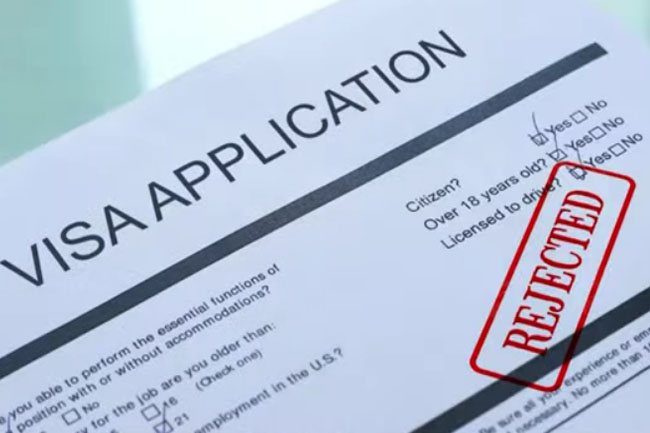Prime Minister Scott Morrison and his Party now acknowledge that migration is crucial to economic growth and prosperity, writes Dr Abul Rizvi.
AFTER TELLING temporary entrants to "go home" just 12 months ago and cutting the Migration Program ceiling by 30,000 per annum to "bust congestion" as part of his 2019 pre-election Population Plan, Scott Morrison now says we must overhaul temporary migration in the post-COVID era to fill rapidly emerging skill shortages.
The Minister for Immigration Alex Hawke is:
“Convinced that the migration program will be a huge part of how we recover from COVID.”
Treasurer Josh Frydenberg says Australia has the “opportunity to attract some of the most skilled and highly qualified individuals from across the world”.
And with no reference to the Prime Minister telling temporary entrants to go home or cutting immigration to "bust congestion", Chair of the Joint Standing Committee on Migration, Julian Leeser, said:
“Australia needs to replace the skilled migrants that left our shores as a result of the pandemic. Without the return of skilled migration, Australia’s economic recovery will be severely hampered and it will be harder to create more jobs for Australians.”
Why the U-turn? No one believes congestion has been "busted" by the recent lockdowns or that cutting the migration program by 30,000 per annum would have busted congestion. That was just Scott Morrison making up a rationale for Dutton’s earlier cut to the program, as well as a bit of convenient dog-whistling.
And if immigration is to now be increased, how will that be done? There is great potential for the Government to make a mess of this, especially if done at the same time as the Department of Home Affairs is implementing a major IT upgrade.
This is a high wire act for Secretary Mike Pezzullo who is really more suited to managing uniforms and guns than complex immigration policy.
There are likely five main drivers for why the Morrison Government is proposing to increase immigration:
- Ongoing employer anger at the changes Peter Dutton made in 2017-18 to employer-sponsored migration;
- Recommendations of the Royal Commission on Aged Care will require a very substantial increase in the number of qualified aged and health care staff to bring aged care delivery to the proposed standard and to meet the increasing demands of a much larger aged care population. This increase cannot possibly be delivered solely by training more Australians;
- Pressure from the agricultural and international tourism industries to address their workforce and related challenges;
- Pressure from universities due to the number of university staff who have lost their jobs following a sharp fall in revenue from overseas students and the Government’s decision to not grant universities access to JobKeeper; and
- Likely advice from Treasury that further ageing of Australia’s population over the next 10-20 years will make high rates of real economic growth impossible to deliver.
Employer-sponsored migration
Employer-sponsored skilled temporary entry visas declined significantly after the Global Financial Crisis (GFC) and then made a remarkable recovery as the stimulus into the Australian economy rapidly reduced unemployment.
The rise in unemployment from 2014 again resulted in a fall in skilled temporary visas. That decline continued as changes to this visa introduced by Peter Dutton plus a slowing in visa processing saw a large decline in 2017-18. While there was a short recovery in 2018-19, that was due to backlog clearance rather than an increase in applications. The decline continued in 2019-20 and there is likely to be a further fall in 2020-21 due to COVID.

While he will not say so, the recommendations of Julian Leeser’s Committee are designed to undo many of the changes Peter Dutton made in 2017-18. But is that the most sensible way forward?
I managed Australia’s migration and temporary entry arrangements for over a decade and can attest that employers seeking to fill a genuine skill shortage are mainly interested in speed, flexibility and certainty.
They don’t want to be messed about by the kinds of bureaucratic delays Peter Dutton specialised in when they need to fill a key vacancy.
From a public policy perspective, the key risks employer-sponsored skilled visa design must address are:
- Employer-sponsored visas being used to undercut job opportunities of Australians, especially for entry-level job vacancies given high youth unemployment amongst Australians without post-school qualifications;
- Use of employer-sponsored visas to suppress wages and exploit overseas workers; and
- Sponsoring employers avoiding their obligations to train Australians.
In this context, it is extraordinary that Leeser ignores the most important policy lever available. That is the minimum salary that every sponsor of a skilled temporary entrant must pay. An appropriately set minimum salary, with minimal scope to use "in-kind" non-cash benefits, effective enforcement and severe penalties for non-compliance, is by far the most effective way to minimise the key risks of skilled temporary entry.
From the checks I have been able to make, it seems the minimum salary requirement for skilled temporary entry may not have been substantially increased since 2013. If that is correct, we can only conclude that skilled temporary entry has been part of the Government’s agenda, as explained by former Finance Minister Mathias Cormann, to slow wages growth in Australia.
If the Government wants to overhaul skilled temporary entry to deliver the speed and flexibility employers desire, it must strengthen the minimum salary requirement, with an appropriate concession for employers in regional Australia.
If not, it will risk, for example, the large corporate aged care providers in Australia using skilled temporary entry to undermine the recommendations of the Royal Commission on Aged Care which wants to increase the qualifications and wages of aged care workers rather than to have them continue to be exploited.
To secure the large numbers of more qualified health and aged care workers that Australia will need, Australia will need to source many of these workers through the overseas students' program. Attracting sufficiently qualified health and aged care workers directly from overseas will be difficult as countries in Europe, Japan and North America will be competing for the same workers.
In this regard, Leeser is right to propose more sensible pathways to permanent residence for overseas students and other temporary entrants. These are the same pathways Dutton made a mess of in 2017-18. For regional Australia, where the demand for qualified health and aged care workers will hit earlier and harder, the Government will also need to revisit the Regional Employer-Sponsored category that Morrison announced with his 2019 Population Plan.
Predictably, that category has turned out to be a total lemon.
Universities will need to switch the focus of their overseas student programs towards health and aged care, and away from the traditional focus on accounting and business. But at a time university finances are heavily stretched, that will be difficult.
The Government will need to assist universities to make the transition to health and aged care training for both domestic and overseas students.
Agriculture and international tourism industries
Both of these industries are pressing the Government for assistance with their labour needs.
Working holidaymakers and work and holiday visa holders have been a traditional source of labour used by these industries. But the number of these visa holders had been in steady decline well before COVID-19 hit, from a peak of around 180,000 in December 2013 to around 140,000 in December 2019, and less than 50,000 in December 2020 and continuing to fall fast.
This is despite a significant expansion in the number of countries with which Australia has a work and holiday agreement as well as expanded opportunities for these visa holders to secure further stay in Australia.
The decline prior to COVID is likely the result of extensive media and social media reports of exploitation of these visa holders, as well as the special "backpacker tax" that has been in place in recent years. Since COVID, with few arriving and large numbers leaving, it was inevitable their numbers would fall sharply.

The Seasonal Worker Programme has, to a small degree, offset the decline in working holidaymakers. However, this scheme has also been plagued by reports of exploitation and abuse, including an extraordinary 22 deaths of people while in Australia on this very small visa as well as serious complaints from some Pacific Island Governments.
Despite the risks of exploitation, the Government has steadily reduced regulations around this visa and shifted the cost burden from employers and labour-hire companies to workers. The farm lobby wants further deregulation and the creation of a U.S.-style agricultural visa, which has often been described as a new form of slavery.
Over the last five to six years, we have also seen the largest labour trafficking scam and abuse of the asylum system in Australia’s history. This scam is run by various agents and labour-hire companies who have misled people mainly from Malaysia and China. They have been brought to Australia on visitor visas and then assisted to apply for asylum while they work, mostly on farms around Australia.
Around 100,000 people have been brought to Australia under this arrangement. While their asylum applications are decided at the primary stage and at the AAT (where the vast majority are refused), they have work rights and can continue to work, including on farms. But once their asylum applications are finally refused, they no longer have work rights.
There are currently around 25,000 refused asylum seekers in Australia, by far the largest number of refused asylum seekers in our history and growing steadily. It is likely to be this group for whom the farm lobby has proposed an immigration amnesty.
The farmers are likely to be uncomfortable with employing so many undocumented workers now that their asylum applications have been refused. The proposal has been endorsed by the National Party and Agriculture Minister David Littleproud.
As the scam developed under Dutton and Pezzullo’s watch, it is unlikely they will support an amnesty, preferring to continue to sweep the issue under the carpet. The steady decline over recent years in compliance action by Border Force against employers who use undocumented labour would tend to confirm this.
Morrison may also be happy to kick the problem down the road for a future government, although the pressure to deal with the complaints of the farm lobby and the National Party will not go away easily. The risk is he will eventually agree to the farm lobby’s pressure to create a U.S.-style agricultural visa with its slave-like features.
That would fundamentally change the nature of regional Australia and how farms in Australia operate.
Treasury advice on net overseas migration
By now it is highly likely Treasury has advised Morrison and Frydenberg of the challenges of delivering high levels of real economic growth and repaying our massive government debt as we enter the second decade of major population ageing in Australia.
The current government debt does not take into account the large fall in per capita revenue as our population ages nor the costs of that ageing to the health, aged care and age pension budgets. Nor does it take into account the massive cost of the third tranche of tax cuts for high-income earners that are yet to come into effect.
Population ageing will mean a continuation of the very weak productivity growth of the last decade, as well as weak growth in the number of hours worked. To deliver the real economic growth Morrison and Frydenberg will demand, Treasury is forecasting a rapid increase in net overseas migration to a long-term level of 235,000 per annum.
For Treasury, these are macro-level assumptions where it has little interest in how the increase in net overseas migration is delivered or what the risks may be. This will be left to the dynamic duo of Dutton and Pezzullo, assisted by new Immigration Minister Hawke.
But some details of Morrison’s immigration U-Turn will have to be revealed in the 2021 Budget and Intergenerational Report.
Dr Abul Rizvi is an Independent Australia columnist and a former Deputy Secretary of the Department of Immigration. You can follow Abul on Twitter @RizviAbul.
Related Articles
- JULIAN BURNSIDE: Dutton is still spending billions to keep people in misery
- Australia's trend toward Dutton-style government power
- Dutton misleads on his role in protecting public health
- Dutton and the conservative extremists: Civil disobedience is not terrorism
- Peter Dutton's trifecta of border protection failures
 This work is licensed under a Creative Commons Attribution-NonCommercial-NoDerivs 3.0 Australia License
This work is licensed under a Creative Commons Attribution-NonCommercial-NoDerivs 3.0 Australia License
Support independent journalism Subscribe to IA.















